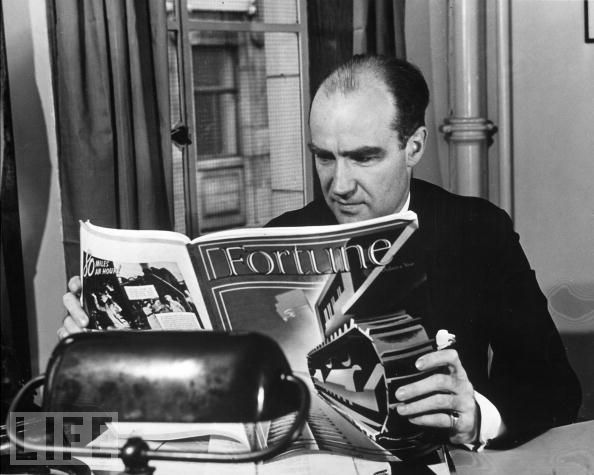 “From the mid-1930s through the late ’50s, Time Inc. was probably the largest news organization in the world, with bureaus on every continent…The company’s success was partly a result of shrewd management. But it was also a result of Luce, who had looked into the future and seen an increasingly integrated nation bound together by railroads, highways, radio, movies and the rise of a national corporate culture. As a result, Americans would need a vast amount of information and an efficient way of accessing it. Luce embraced that future and created vehicles that served the needs of his rapidly changing times.”
“From the mid-1930s through the late ’50s, Time Inc. was probably the largest news organization in the world, with bureaus on every continent…The company’s success was partly a result of shrewd management. But it was also a result of Luce, who had looked into the future and seen an increasingly integrated nation bound together by railroads, highways, radio, movies and the rise of a national corporate culture. As a result, Americans would need a vast amount of information and an efficient way of accessing it. Luce embraced that future and created vehicles that served the needs of his rapidly changing times.”
On the release of his long-awaited The Publisher, an extensive biography of TIME/LIFE founder Henry Luce, Columbia historian (and my dissertation advisor) Alan Brinkley discusses how Luce may have coped with the Digital Age. “Luce — for all his flaws — was an innovator, a visionary and a man of vast and daunting self-confidence. Were he to live in our time, trying once again to revolutionize the spread of knowledge, he might find his talents much in demand.“
And, in very related news, Boing Boing posts Chris Ware’s recently rejected throwback cover for Fortune‘s annual 500 issue. “It hearkens back to the golden age of Fortune as an exemplar of beautifully designed and illustrated magazines…’and he filled the image with tons of satirical imagery, like the U.S. Treasury being raided by Wall Street, China dumping money into the ocean, homes being flooded, homes being foreclosed, and CEOs dancing a jig while society devolves into chaos. The cover, needless to say, was rejected.’”






